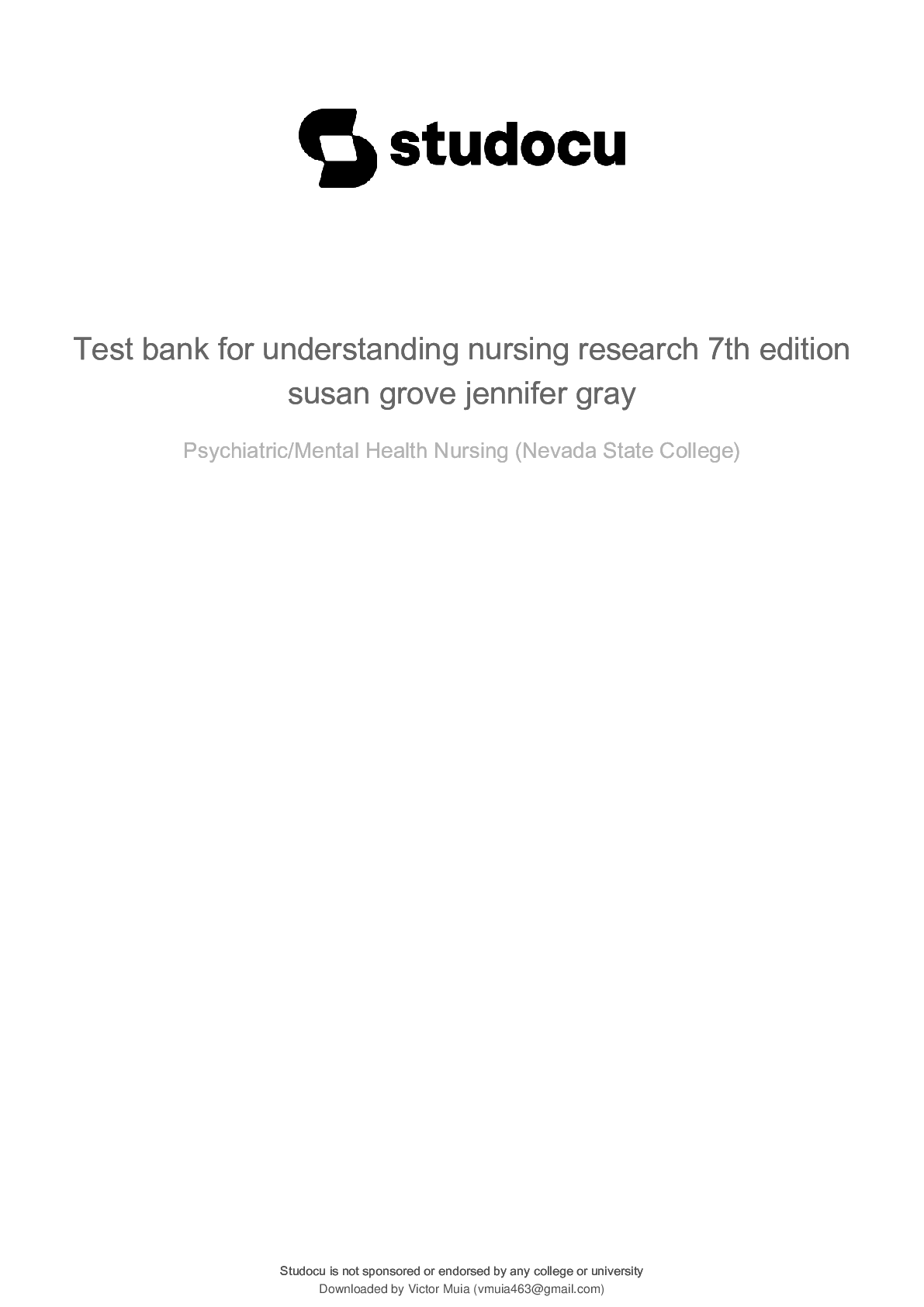Test Bank for Understanding Nursing Research 7th Edition by Grove
Document Content and Description Below
TEST BANK FOR UNDERSTANDING NURSING RESEARCH 7TH EDITION BY GROVE Chapter 01: Introduction to Nursing Research and Its Importance in Building an Evidence-Based Practice Grove: Understanding Nursing Re... search, 7th Edition MULTIPLE CHOICE 1. Which statement best describes evidence-based practice (EBP)? a. A combination of best research evidence, clinical expertise, and the needs and values of patients b. A determination of the factors necessary to control patient responses to care and delivery of care c. The development of population care guidelines applicable to all patients d. The utilization of quantitative and qualitative studies to enhance patient outcomes ANS: A Evidence-based practice evolves from the integration of the best research evidence with clinical expertise and patient needs and values. Studies that attempt to find determinants of patient outcomes are generally experimental or quasi-experimental. They may be used to guide EBP but do not completely define it. EBP is a combination of guidelines and specific patient needs and values. Quantitative and qualitative studies applied to the evaluation of patient outcomes are part of EBP but do not completely define EBP. DIF: Cognitive level: Remembering (Knowledge) 2. The nurse is collecting data about the sleep patterns of breastfed babies as part of a larger research study. Which researNch mRethIod Gw illBt h.eCnurMse use when collecting data for this study? a. Control b. Description c. Explanation d. Prediction ANS: B U S N T O Description involves identifying and understanding the nature of nursing phenomena and the relationships among these phenomena. Control can be described as the ability to write a prescription to produce the desired results. Explanation clarifies the relationships among phenomena and identifies why certain events occur. Through prediction, the probability of a specific outcome can be estimated in a given situation. DIF: Cognitive level: Understanding (Comprehension) 3. The nurse is participating in a study and is collecting data identifying the number of obese adults whose parents were also obese or overweight. Which research method is being used in this study? a. Control b. Description c. Explanation d. Prediction ANS: D Through prediction, the probability of a specific outcome can be estimated in a given situation. By knowing the percentage of parents of obese adults who were obese, the probability of predicting this may be calculated. Control indicates the ability to use a prescribed intervention to produce the desired results. Description involves identifying and understanding the nature of nursing phenomena and the relationships among these phenomena. Explanation clarifies the relationships among phenomena and identifies why certain events occur. DIF: Cognitive level: Applying (Application) 4. The nurse reviews a study in which adherence to an asthma action plan is compared among groups of young adults who received different asthma education. Which research method does this represent? a. Control b. Description c. Explanation d. Prediction ANS: C Explanation clarifies the relationships among phenomena and identifies why certain events occur. Control indicates the ability to use a prescribed intervention to produce the desired results. Description involves identifying and understanding the nature of nursing phenomena and the relationships among these phenomena. Through prediction, the probability of a specific outcome can be estimated in a given situation. DIF: Cognitive level: Applying (Application) 5. A nurse manager is interestedNiUnRl eSarIn iNngGwThBic.hCaOttiMtudes among staff nurses may indicate relative risk of needle-stick injuries. To study this, the nurse manager will employ which method of study? a. Control b. Description c. Explanation d. Prediction ANS: D Through prediction, the probability of a specific outcome can be estimated in a given situation. Control indicates the ability to use a prescribed intervention to produce the desired results. Description involves identifying and understanding the nature of nursing phenomena and the relationships among these phenomena. Explanation clarifies the relationships among phenomena and identifies why certain events occur. DIF: Cognitive level: Applying (Application) 6. Which is the most important result of Florence Nightingale’s data collection and statistical analysis during the Crimean War? a. Bringing awareness of the rigors of war to the general public in relation to care practices b. Developing a process for statistical analysis and nursing documentation c. Identifying and defining the role of nurses in modern health care d. Using clinical research to evaluate the need for sanitation, clean drinking water, and adequate nutrition ANS: D Nightingale’s research enabled her to instigate attitudinal, organizational, and social changes, including the military’s approach to the care of the sick and society’s sense of responsibility for testing public water, improving sanitation, and preventing starvation to decrease morbidity and mortality rates. Bringing awareness of the rigors of war to the public, developing a process for statistical analysis and nursing documentation, and identifying and defining the role of nurses in modern health care were not the most important results. DIF: Cognitive level: Understanding (Comprehension) 7. The nurse participates in data collection in a study in which two different pain management protocols are used with randomly assigned patients to measure differences in postoperative recovery time. Which method of study is this? a. Control b. Correlation c. Description d. Explanation ANS: A Control indicates the ability to use a prescribed intervention to produce the desired results. Correlation examines the relationships between different phenomena. Description involves identifying and understanding the nature of nursing phenomena and the relationships among these phenomena. Explanation clarifies the relationships among phenomena and identifies why certain events occur. DIF: Cognitive level: ApplyinNgU(ARpSplIicNa tiGonT) B.COM 8. The nurse reviews a study exploring experiences of nurses’ decision-making processes regarding reporting a medical error. Which research method does this represent? a. Control b. Description c. Explanation d. Prediction ANS: B Description involves identifying and understanding the nature of nursing phenomena and the relationships among these phenomena. Control can be described as the ability to write a prescription to produce the desired results. Explanation clarifies the relationships among phenomena and identifies why certain events occur. Through prediction, the probability of a specific outcome can be estimated in a given situation. DIF: Cognitive level: Understanding (Comprehension) 9. The development of nursing theories and conceptual models in the late 1960s and 1970s served to a. determine the effectiveness of nursing interventions. b. establish the concept of evidence-based practice. c. provide funding for nursing research. d. provide direction for nursing research. ANS: D The theories developed in the 1960s and 1970s helped to guide future nursing research and practice. Outcome studies are used to determine the effectiveness of nursing interventions. The concept of EBP was developed in the 1970s and promoted by the ANCC Magnet Hospital Designation program. The NINR seeks to provide funding for nursing research. DIF: Cognitive level: Understanding (Comprehension) 10. The National Institute of Nursing Research (NINR) began to change its focus to a. funding nursing rather than medical research. b. evaluating outcomes rather than process studies. c. increasing the status and funding for nursing research. d. supporting the dissemination of nursing research. ANS: C The National Center for Nursing Research (NCNR) changed its name to the NINR to increase the status and funding of nursing research. The change in focus from medical to nursing research came about with the first nursing programs. Outcomes research emerged in the 1980s and 1990s to document the effectiveness of healthcare services. The NCNR’s purpose was to support the conduct and dissemination of knowledge development through nursing research. DIF: Cognitive level: Remembering (Knowledge) 11. An emphasis of the American Nurses Credentialing Center (ANCC) Magnet Hospital Designation Program for Excellence in Nursing is a. research and development of clinical practice guidelines. b. putting qualitative research into practice in clinical settings. c. using standard nursing caN reUpRl aSnsIbNaGs eTd Bo n.oCuOtcMomes research. d. utilizing evidence-based practice in nursing. ANS: D ANCC implemented the Magnet Hospital Designation Program for Excellence in Nursing Service in 1990 that emphasized EBP for nursing. Clinical practice guidelines are a more recent phenomenon, using evidence-based research, expert opinion, and patient needs and values to standardize care. Qualitative research was introduced in the late 1970s to gain insight into the phenomena related to nursing. Outcomes research was important in the 1980s to 1990s to document the effectiveness of healthcare services. DIF: Cognitive level: Remembering (Knowledge) 12. In a position statement in 2006, the American Association of Colleges of Nursing (AACN) identified a need to a. acquire clinical knowledge and expertise. b. focus on evidence-based practice. c. fund academic nursing research. d. prepare a workforce of nurse scientists. ANS: D N R I G B.C M The AACN identified the importance of creating a research culture, providing high-quality educational programs to prepare a workforce of nurse scientists, develop a sound research structure, and obtain funding for nursing research. Basic nursing education focuses on clinical knowledge and expertise. Evidence-based practice is a focus of ANCC and the Magnet Designation Program for Excellence in Nursing Service. The NINR focuses on funding for nursing research. DIF: Cognitive level: Understanding (Comprehension) 13. The lead agency designated to improve healthcare quality is a. Agency for Healthcare Research and Quality (AHRQ). b. American Nurses Credentialing Center (ANCC). c. Quality and Safety Education for Nurses (QSEN). d. National Institute for Nursing Research (NINR). ANS: A AHRQ is a scientific partner with the public and private sectors to improve the quality and safety of patient care. ANCC provides credentialing for advanced practice nurses and for Magnet Designation for Excellence in Nursing Service. QSEN is focused on developing the requisite skills, knowledge, and attitude statements for the competencies for prelicensure and graduate education. The National Institute of Nursing Research is a federally funded arm of the National Institutes of Health, providing nursing with federal support for nursing research priorities. DIF: Cognitive level: Remembering (Knowledge) 14. To help fulfill the mission of the National Institute for Nursing Research—to promote and improve the health of individuaUls, SfamNiliesT, commOunities, and populations—a study may be conducted that a. assesses the effectiveness of strategies for weight management in patients with type 2 diabetes. b. compares the attitudes of nurses toward clients with type 1 and type 2 diabetes. c. generates up-to-date nursing diagnoses reflecting the needs of clients with type 2 diabetes. d. reviews hospital nurses’ adherence to glucose-monitoring guidelines for patients with type 2 diabetes. ANS: A A study that assesses the effectiveness of interventions helps to improve the health of patient populations by identifying appropriate strategies. A comparison of attitudes is a descriptive study that does not improve outcomes. A study to generate nursing diagnoses does not directly affect patient outcomes. A study reviewing adherence to guidelines seeks to provide data for quality assurance. DIF: Cognitive level: Applying (Application) 15. Which best describes the Quality and Safety Education for Nurses (QSEN) competency for evidence-based practice (EBP)? a. Adhering to published guidelines to provide care for a specific population b. Empowering clients to choose among effective disease management strategies c. Relying on expert knowledge to guide care plan development for an individual patient d. Using evidence gained solely from experimental studies to guide [Show More]
Last updated: 11 months ago
Preview 1 out of 224 pages

Reviews( 0 )
Document information
Connected school, study & course
About the document
Uploaded On
Sep 18, 2022
Number of pages
224
Written in
Additional information
This document has been written for:
Uploaded
Sep 18, 2022
Downloads
0
Views
31


.png)

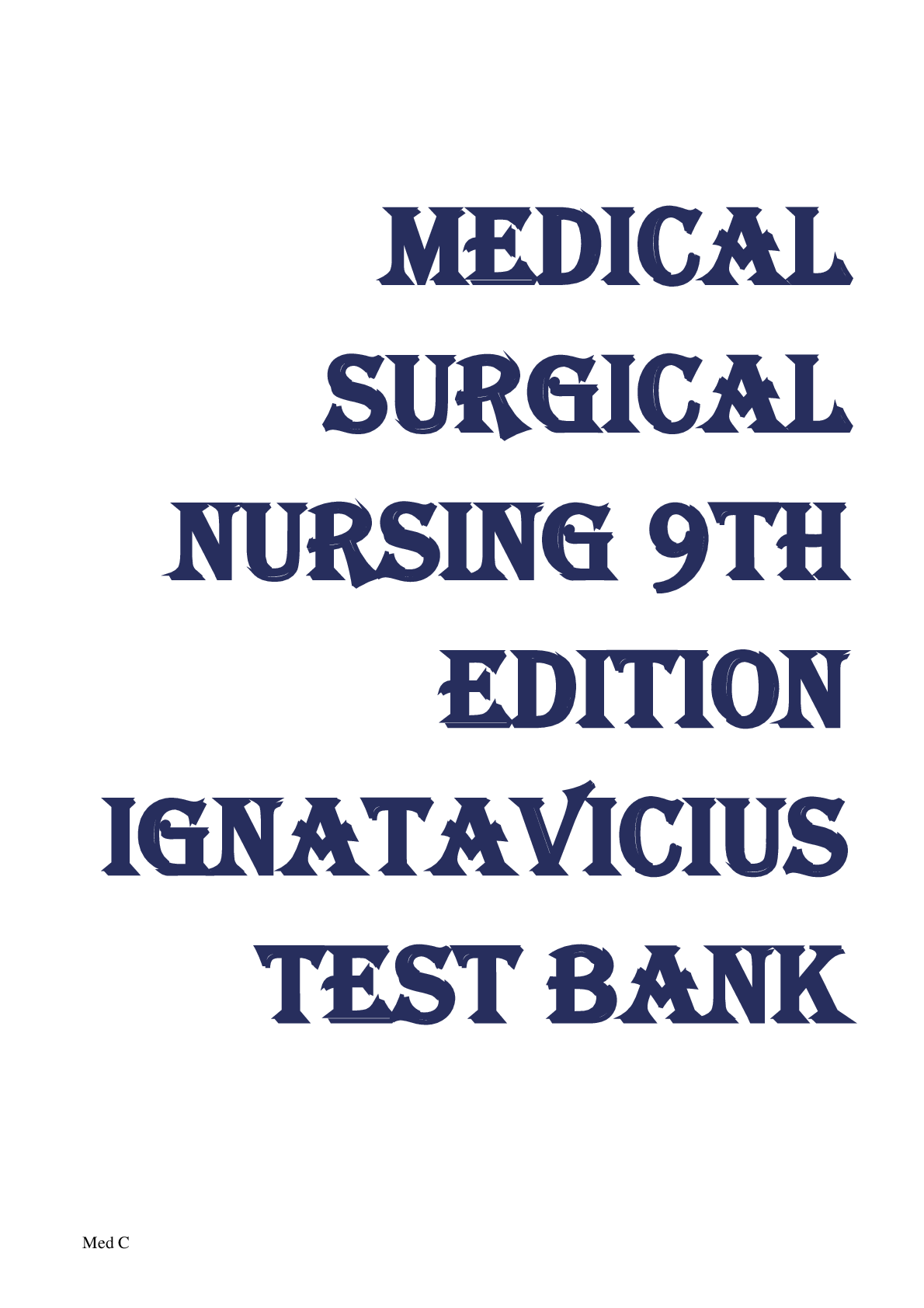

.png)
.png)
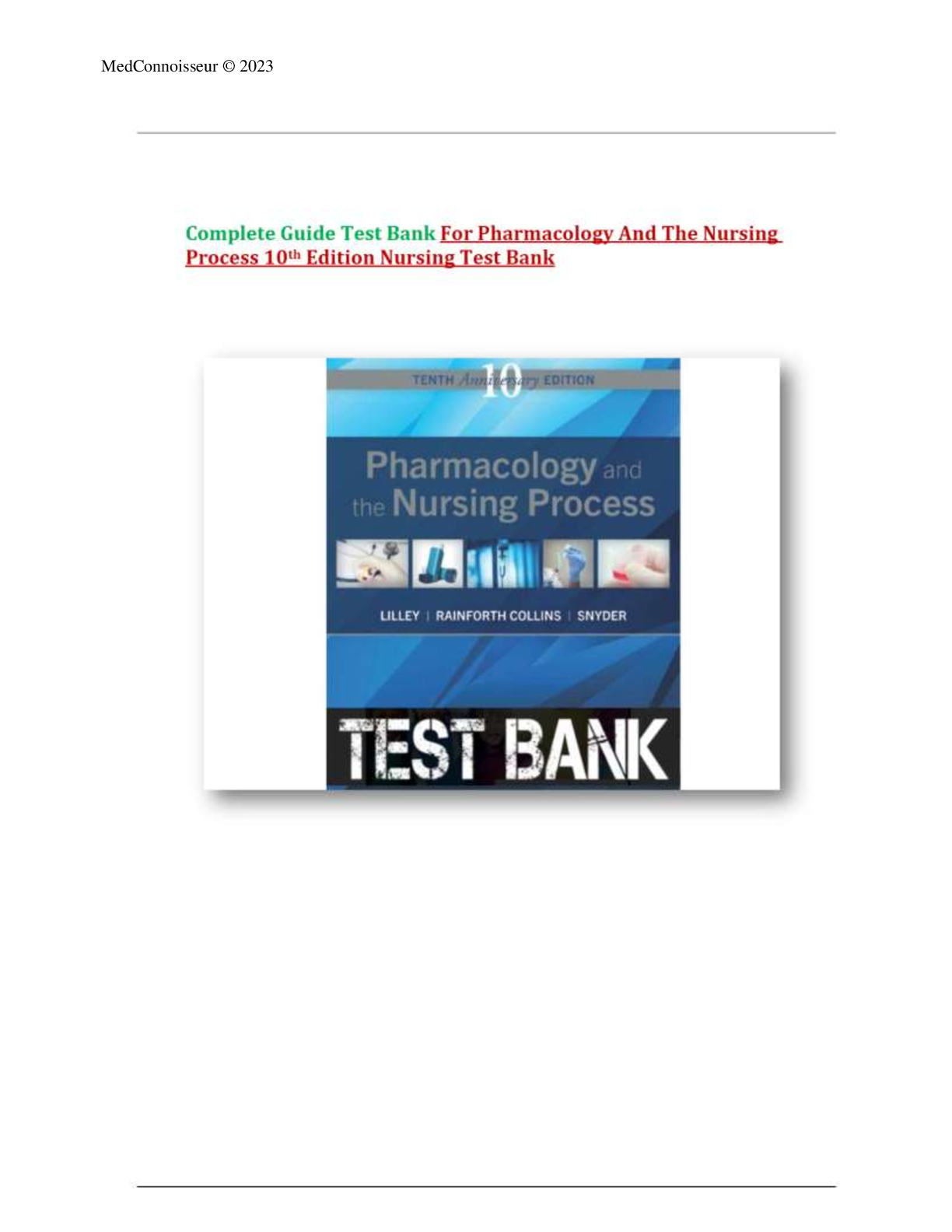

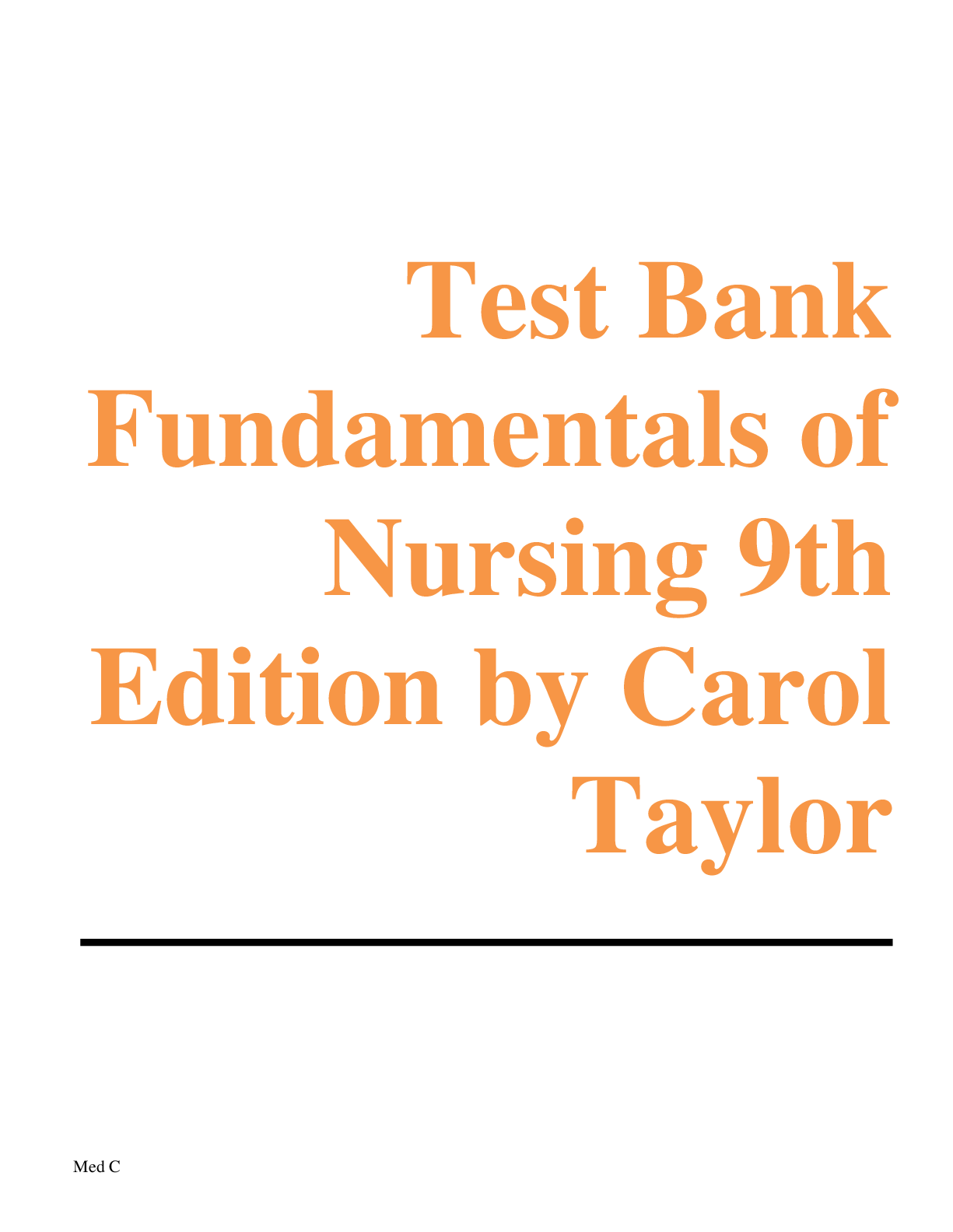

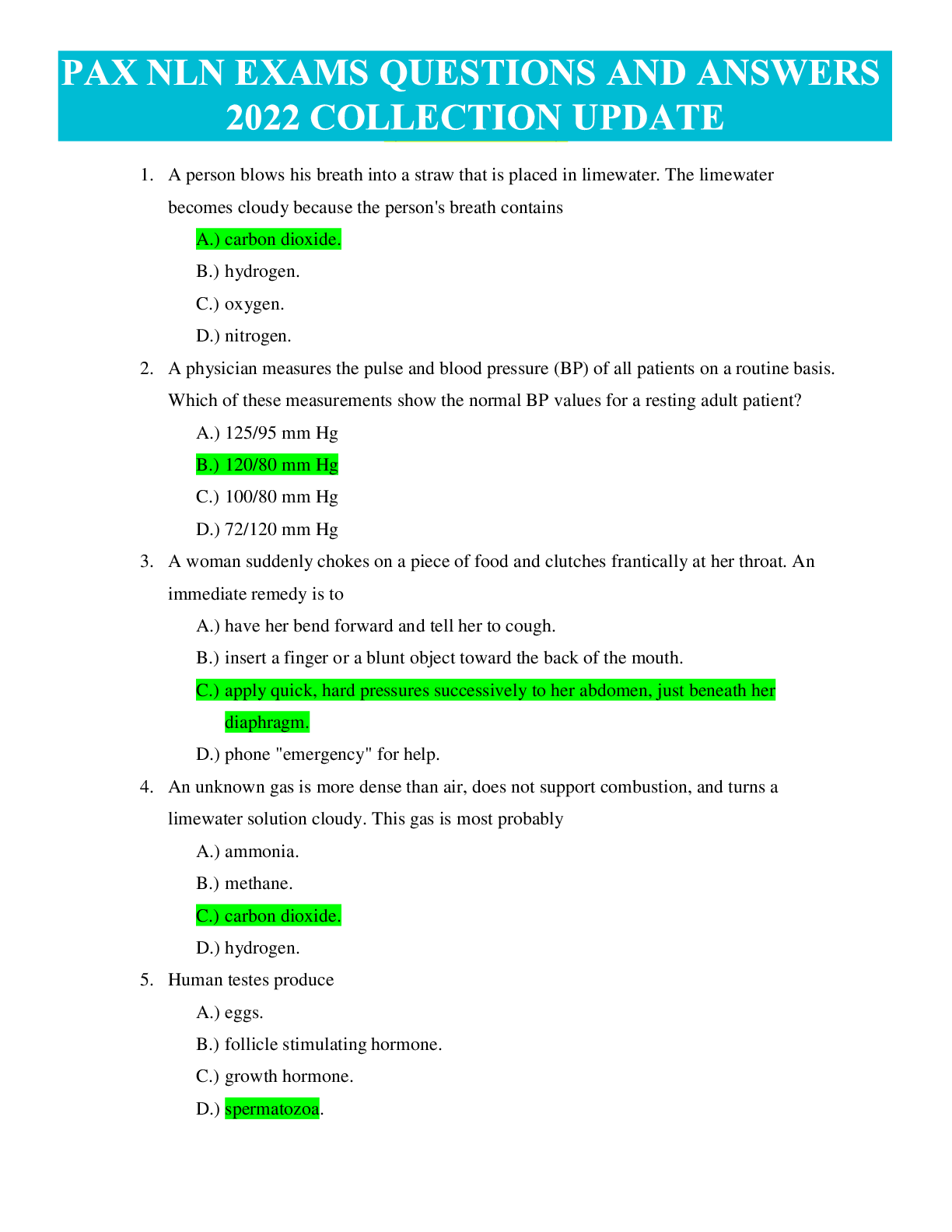

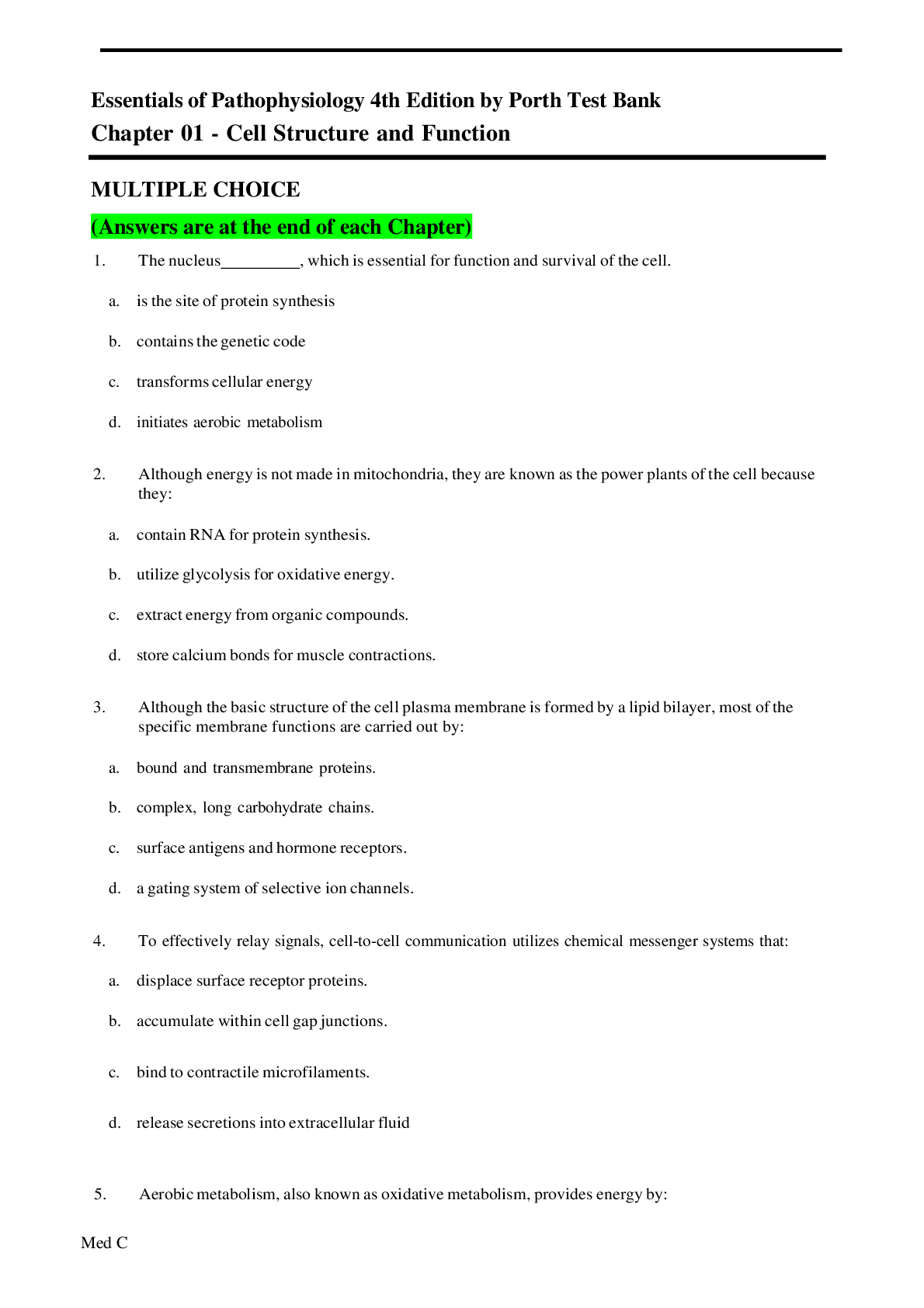

.png)
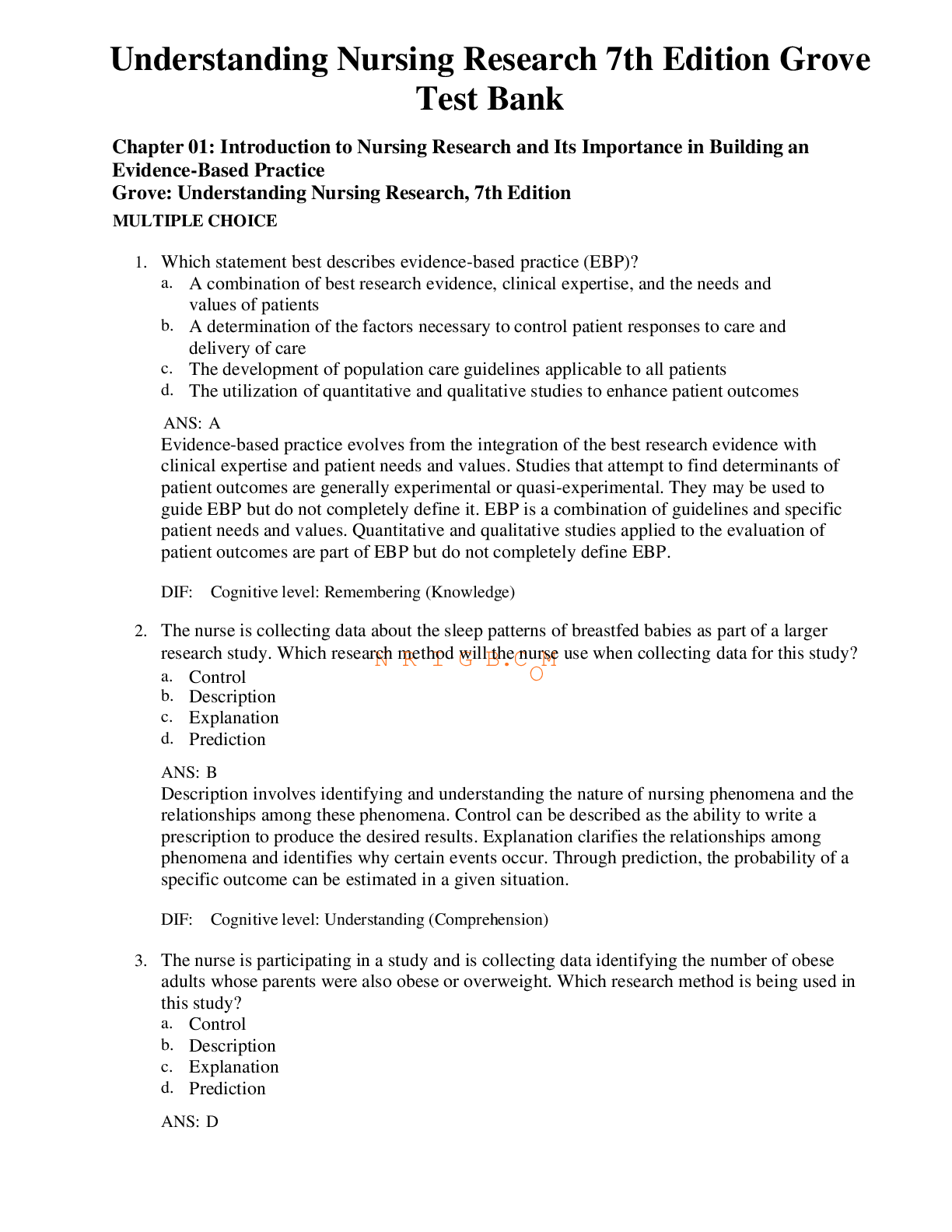

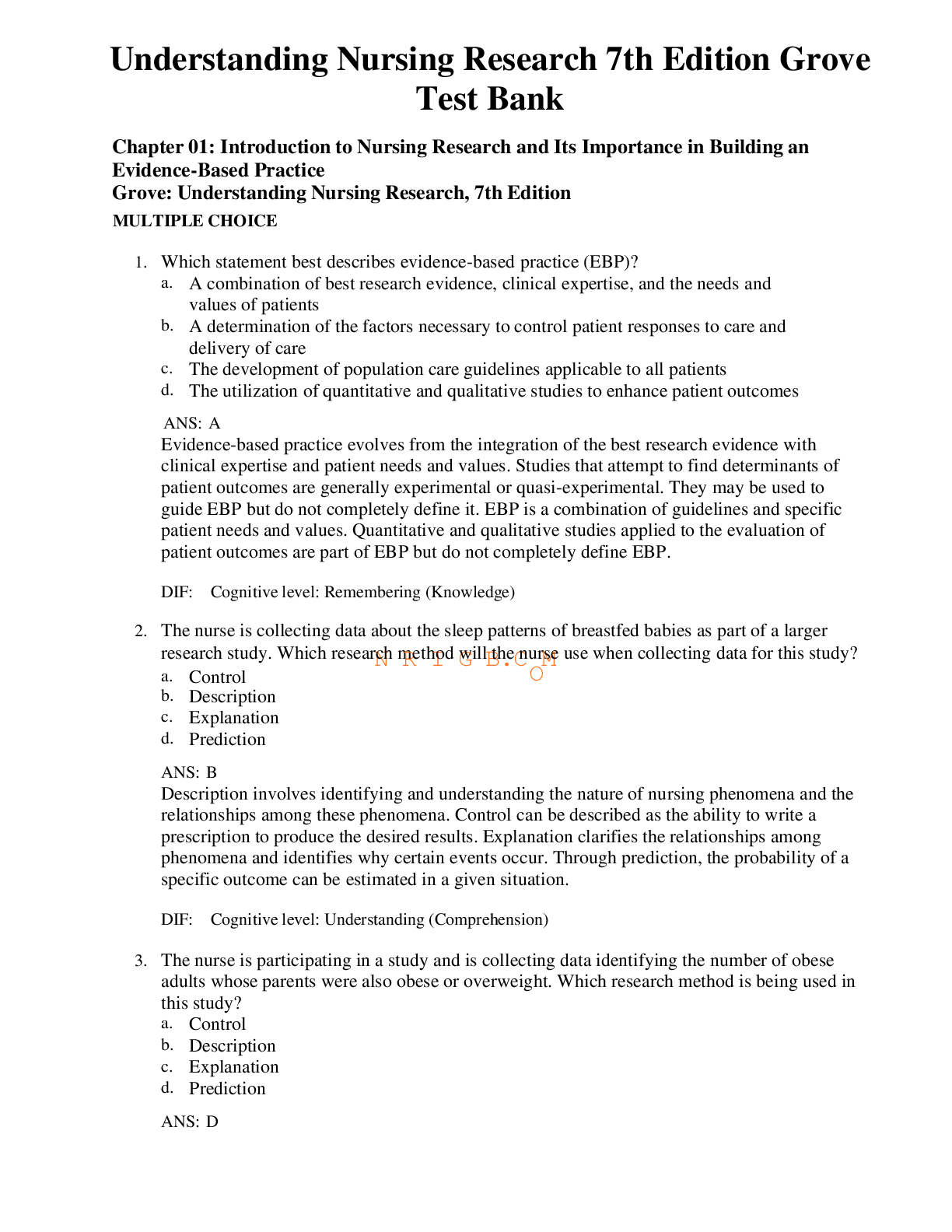
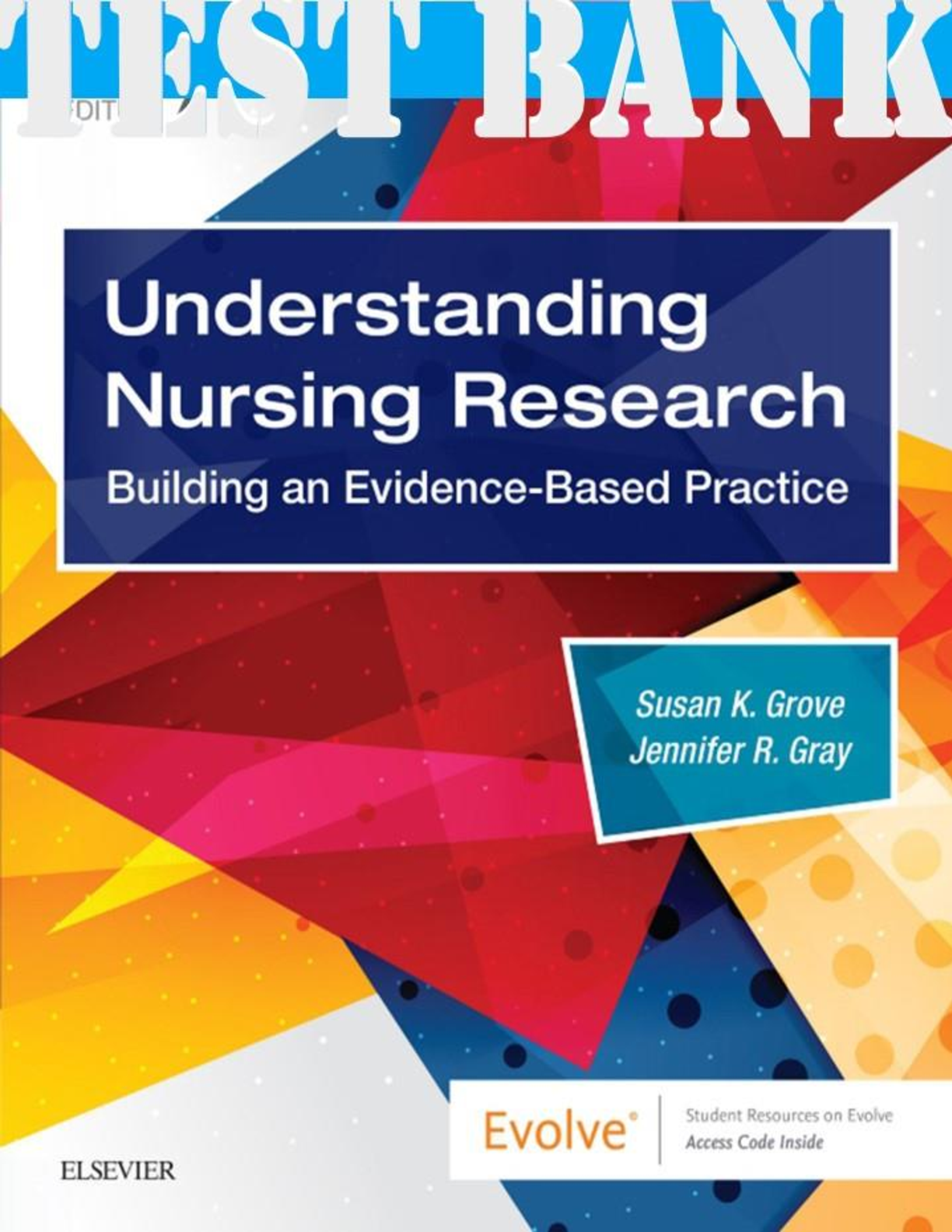

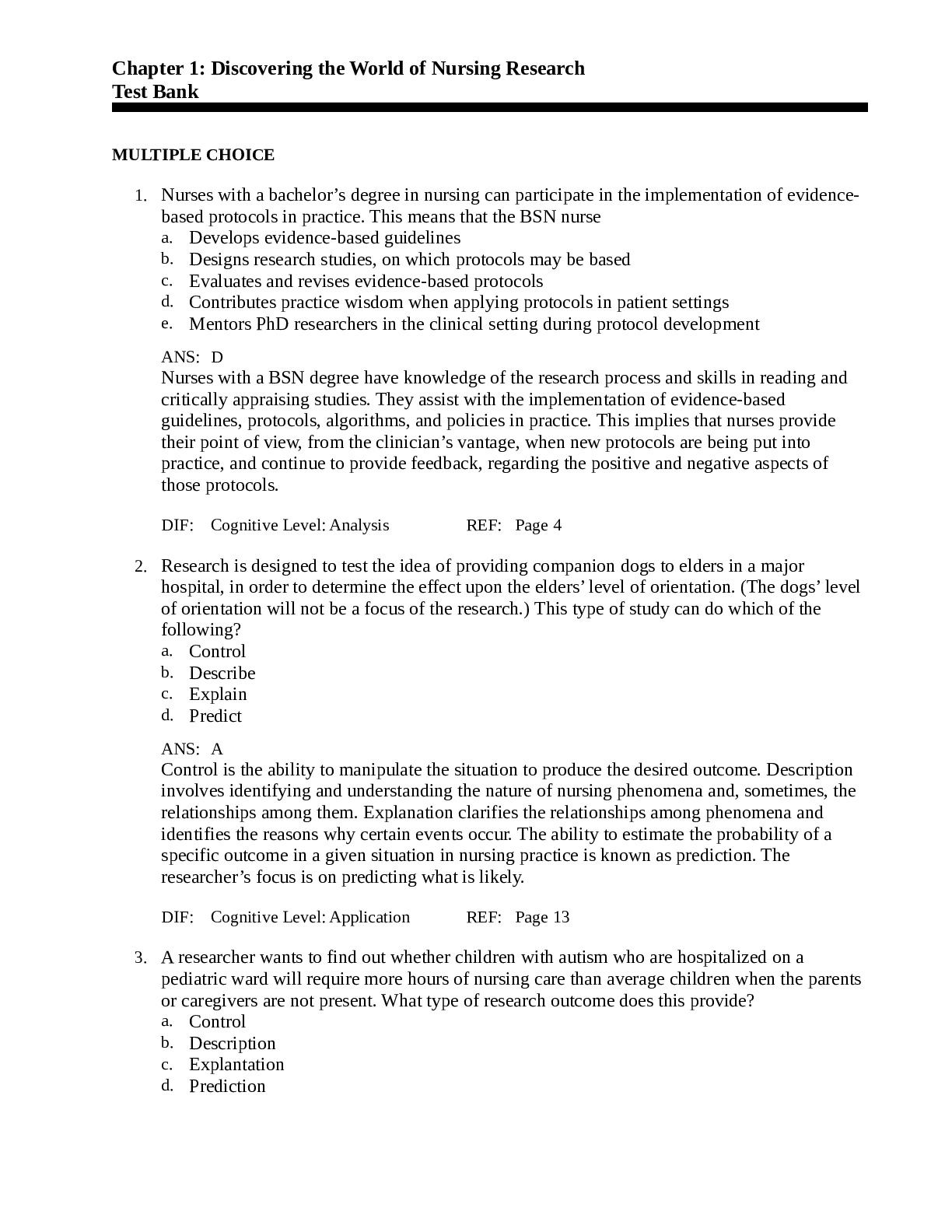



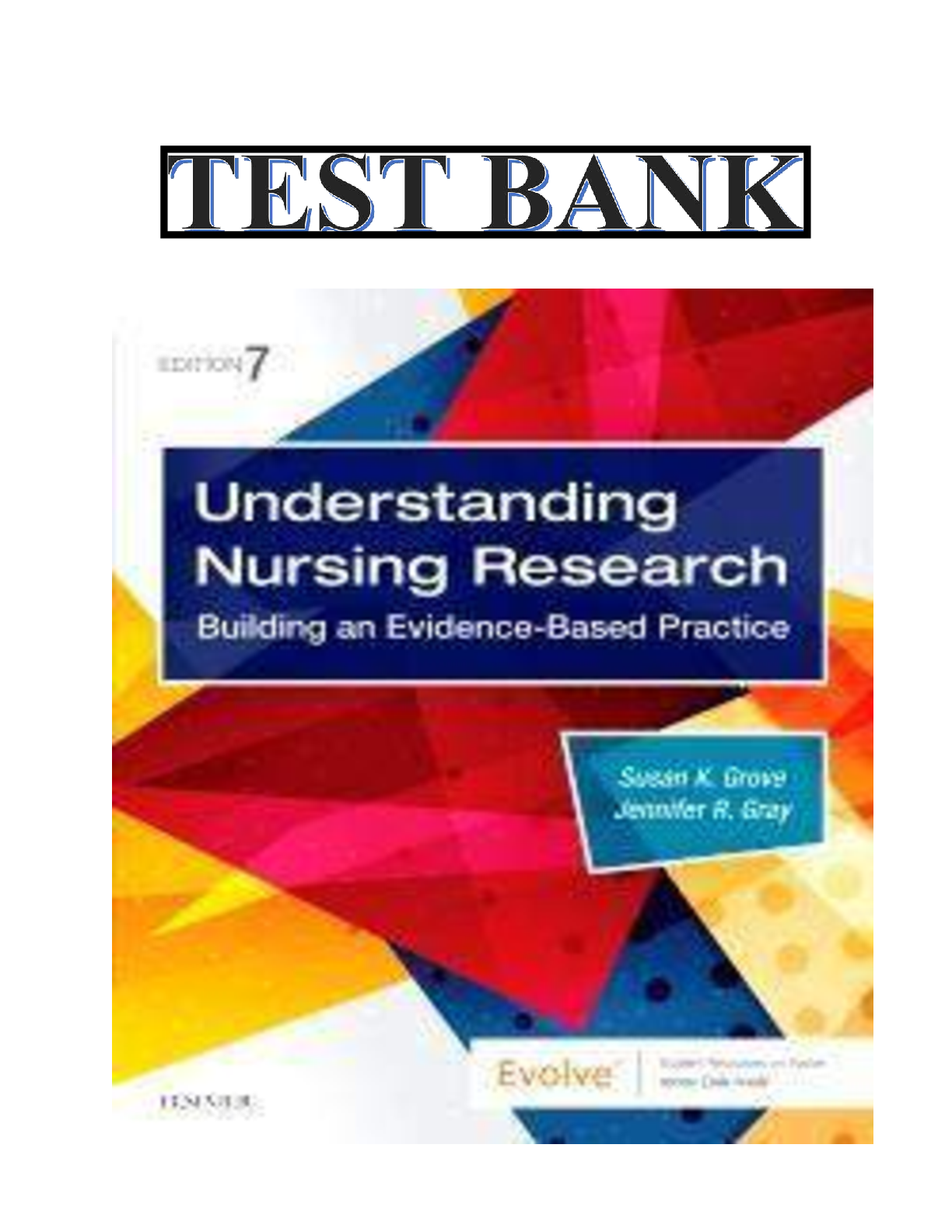
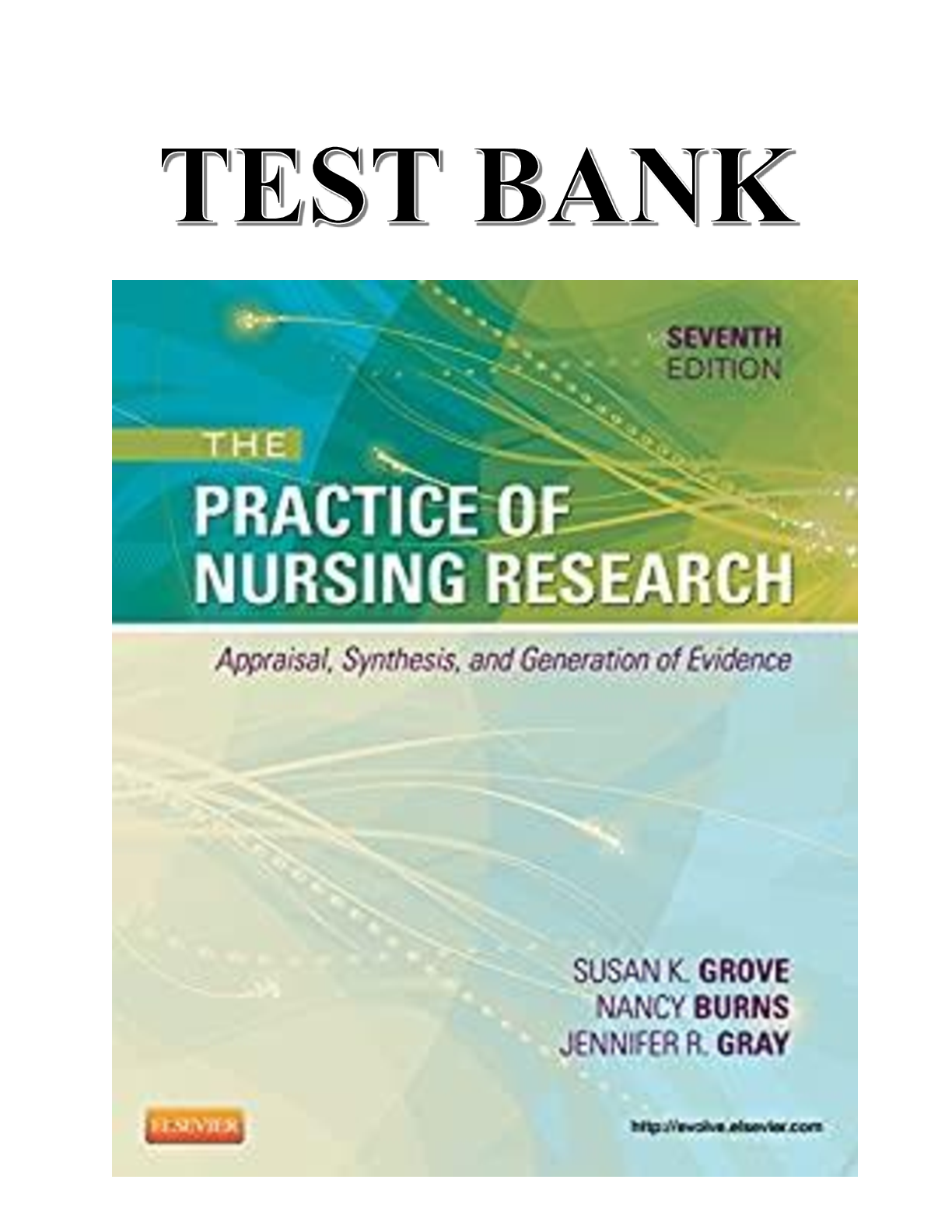
.png)

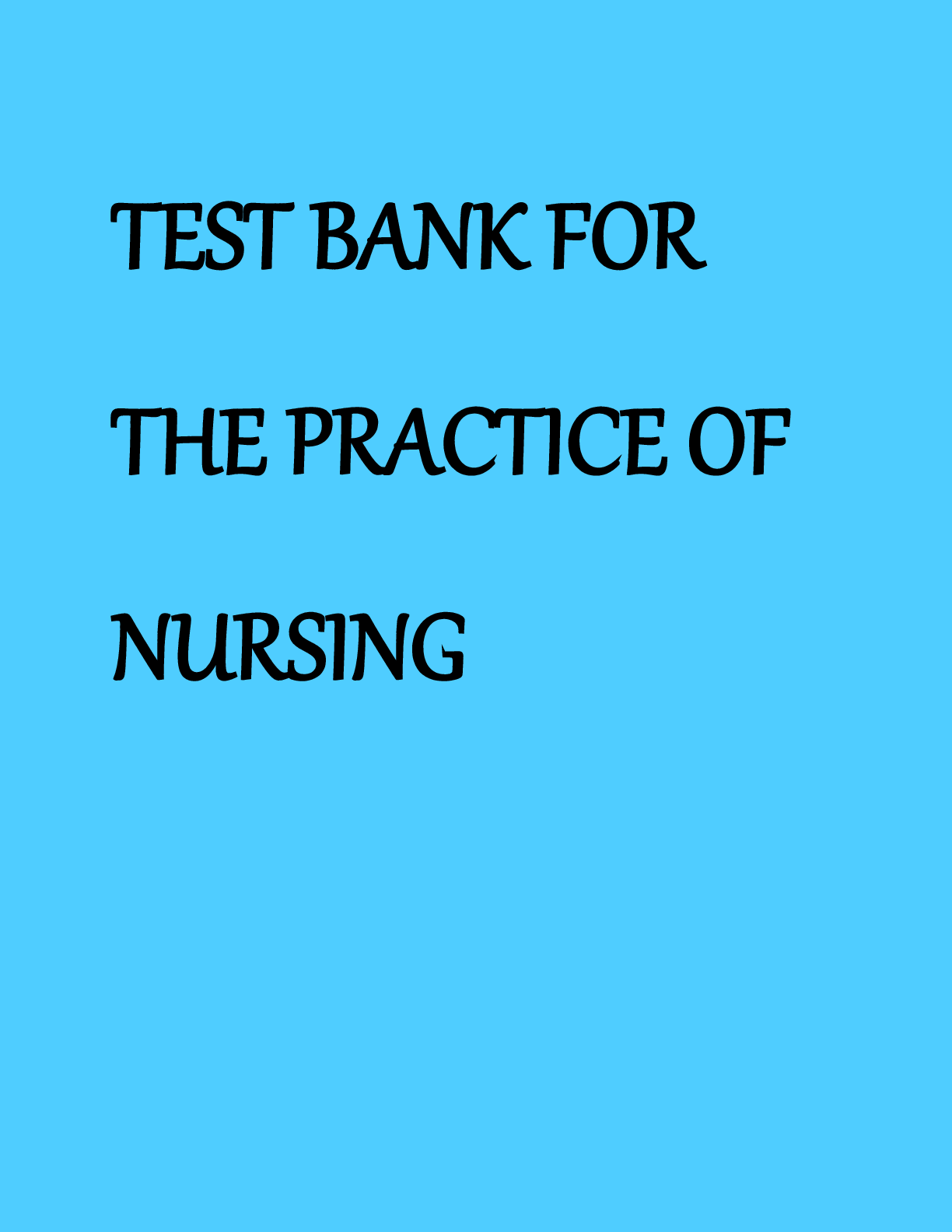

.png)
